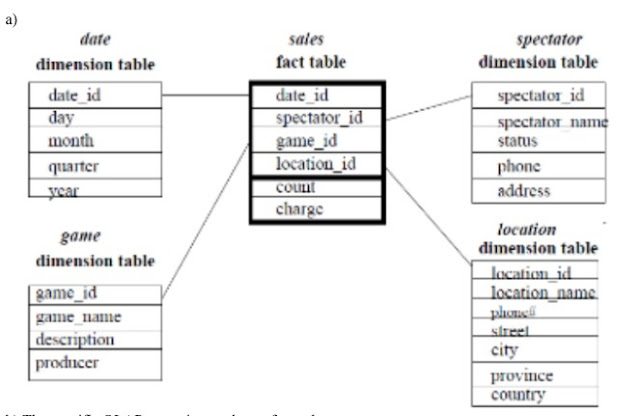Explain wider dissemination and critical flow model of e-governance .
Broadcasting Model/ Wider Dissemination Model
Principle
• Broadcasting model is based on mass dissemination of governance-related information which is already available in the public domain into the wider public domain using ICTs.
• This raises awareness among the citizens about ongoing governance processes and government services that are available to them and how they can benefit from them
• The application of this model using appropriate technologies, could reduce the "information failure situations".
Applications:
• Putting governmental laws and legislations online
• Making available the names, contact addresses, emails, mobile numbers of local/ regional/ national government officials online.
• Make available information such as governmental plans, budgets, expenditures, and performance reports online.• Putting key judicial decisions of value to general citizens and creating precedence for future actions online. viz. key environmental decisions, state vs. citizen decisions, etc.
Example of Wider Dissemination Model
Like in India: Directory of Official Websites of Government of India National Informatics Centre (India) is the official website of the Government
India which makes available Ministerial Information, Indian Laws, and Legislation also
Online, Contact Details, etc. online for public access. http://goidirectory.nic.in/exe.htm#min (Parent Website: http://www.nic.in)
Evaluation
• The Broadcasting Model is a stepping stone to more complex Digital Governance models. It also the most fundamental model as it enhances 'access' and 'flow' of information to a segment of the society, which is essential to bringing good governance.
• In several developing counties, even the basic governance-related information is unavailable for instance, the opening and closing times of government offices, or information government departments and units that deal with specific issues such as agricultural subsidies or getting a license for opening a business.
• Central and state governments in developing countries need to aggressively adopt this model to provide greater governance services to their constituencies, and to enhance the participation of citizens in the governance process.
Merits :
• It enhances 'access' and 'flow' of information to all segments of the society
• Government can use this model to provide greater governance services to their constituencies and to enhance the participation of citizens in governance processes.
Demerits:
• The model can lose its effectiveness
• In situation of optimal ignorance
• In societies, where the free flow of information is not possible.
Critical Flow Model
Principle
• The model is based on broadcasting information of 'critical' value (which by its very nature will not be disclosed by those involved with bad governance practices) to a targeted audience using ICTs and other tools.
• The targeted audience may include media, affected parties opposition parties, judicial bench, independent investigators, or the general public.
• Those who would divulge such information could include upright officials and workers, whistleblowers, affected parties, and those who were themselves involved in bad governance practices but have now changed their minds or may wish to trade such information for lenient punishments.
Application
• This model could be applied in the following possible ways:
• Making available corruption-related data about a particular Ministry / Division/ Officials online to its electoral constituency or to the concerned regulatory body.
• Making available Research studies, Enquiry reports, Impact studies commissioned by the Government of Independent commissions to the affected parties.
• Making Human Rights Violations cases violations freely available to Judiciary, NGOs, and concerned citizens. Making available information that is usually suppressed, for instance,
• Environmental Information on radioactivity spills, effluents discharge, information on green ratings of the company to the concerned community.
Example of Critical flow model
Global: Wikileaks
www.wikileaks.org
WikiLeaks is a not-for-profit media organization. It brings important news and information to the public. It publishes secret information, news leaks, and classified media from anonymous sources to keep the public informed, amongst others on cases of corruption, whistle-blowing, and crimes.
Evaluation
• This model is more directed and evolved in comparison to the Broadcasting / Wider - Dissemination Model. Different organizations can use it differently depending on the aspect of governance the situation they want to address.
• Critical Flow Model is more focused in terms of its information content and its intended users. Due to the critical aspect of information, the model exposes the weakest aspects of governance and decision-making mechanisms and informs people about specific cases of state failure and bad governance to build up a case for concerted action.
• The model will not work in cases where government mechanisms do not foster public debates and censure all information of critical nature. It will also fail where the government maintains tight control of overall information. There it remains restricted to the top few levels of the government. Inherently the Internet is an open medium.
• Thus, restricted dissemination is only typical-only those interested may use the critical and subject-based information lodged on Internet websites for public access (as indicated above) as applications.
Merits
• This model is more directed and evolved.
• Different organizations can use it differently depending on the aspect of governance they situation they want to address.
• The model corrects information failure, raising awareness about the bad governance practices, and acts as a hindrance to bad governance practices.
• Also, the model exerts indirect pressure on the concerned governance institution/policy-making body to move away from optimal ignorance attitude to reform, and take into cognizance the interest and opinion of the masses in decision-making processes.
Demerits
• The model may not work in cases where the governance mechanism does not allow public debates and opinions and censures all information of critical nature.





Comments
Post a Comment